Sushi Striker is a delightful game that launched at an awful time
The Nintendo Switch has a big six months ahead of it, and that period was kicked off by the release of Sushi Striker: The Way of Sushido earlier in the month. Co-developed by Nintendo EPD and indieszero, Sushi Striker definitely isn't the first-party fare we've come to expect from Nintendo over the years, but that didn't stop it from turning some heads when it was revealed back at E3 2017. Sushi Striker is every bit as good as those pre-launch trailers suggested it would be, but the problem is that it launched at a really bad time, especially considering that it's the first game in a new franchise.Sushi Striker launched on June 8, a mere day before Electronic Arts kicked off E3 2018 with its press conference on Saturday, June 9. What could have been a period of deeper discussion about how Sushi Striker is one of the most surprising Switch (and 3DS) releases of the year was quickly overshadowed by the hype of all the announcements at E3. Even my own coverage of Sushi Striker, which I received from Nintendo on launch day, was delayed by arrival of E3, which demands attention as one of the biggest gaming shows of the year.
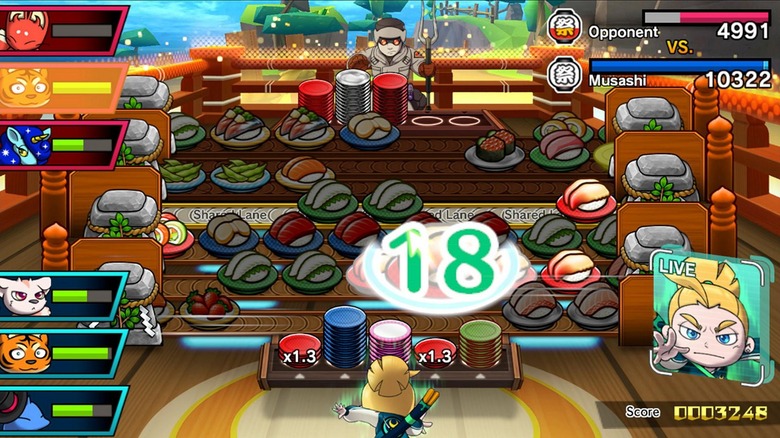
Even though the dust has settled, Nintendo is quickly onto its next big summer launch, Mario Tennis Aces, which is out today. While much of my time over the next few days will be occupied with trying to figure out how to counter Boo's curve balls and successfully block shots without breaking my tennis racket, I did want to take a moment before I dive into the tennis life to share my thoughts on Sushi Striker, as I feel it's a game that shouldn't be overlooked, even by those who aren't normally puzzle game fans.
Sushi Striker, in short, is an instantly familiar puzzle game that does a lot of interesting things. It's got the frantic pace of an action game, the easy-to-learn, difficult-to-master feel of a tile matching game, and some light RPG mechanics thrown in for good measure. It seamlessly blends all of these mechanics into a game that is fun for puzzle newcomers, challenging for veterans of the genre, and addicting for pretty much everyone of all gaming backgrounds.
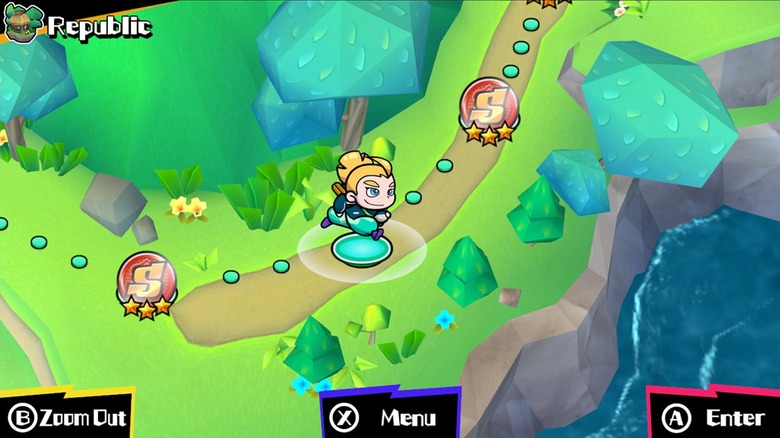
For those not in the know, allow me to get you up to speed. In Sushi Striker, you play as Mushashi, an orphaned boy or girl (your choice) who lives in a world without fish. Sushi still exists, as it's created by mythical beings known as Sushi Sprites. The oppressive Empire in Sushi Striker's world looks to control the Sushi Sprites, and thereby control the world's supply of sushi, while the more benevolent Republic wants sushi for all.
When the game picks up, a conflict called the Sushi Struggles has just ended, with the Empire emerging victorious over the Republic. As a result of this, the consumption of sushi has been forbidden within the borders of the Republic, though there are pockets of sushi freedom fighters who still resist. Mushashi becomes one of those freedom fighters when they meet a Sushi Sprite named Jinrai. The bond formed between the two grants Mushashi the title of Sushi Striker, and that's when our adventure truly begins.
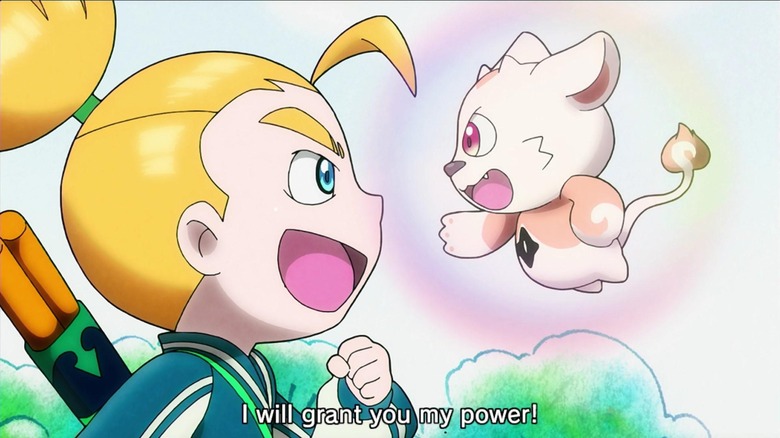
As a Sushi Striker, you'll battle soldiers from the Empire in a rather unique way: by eating sushi. More specifically, you match plates of the same color as they roll by on conveyor belts in front of you and then throw the empty plates at your opponent to do damage. If it sounds silly, that's because it is.
Sushi Striker is a lot more than simply matching plates of the same color, though. As you play, you'll unlock different lane gears that change the way the conveyor belts move, allowing you to find a speed that works for you. You Sushi Sprites also have abilities of their own, which you charge up by matching plates of sushi. In the end, your goal is to decrease your opponent's health to zero before they have a chance to do the same to you.
Sushi Sprites offer an interesting twist on what is otherwise a pretty straightforward riff on the super popular match-3 genre. You can take up to three Sushi Sprites into battle with you, with each one offering a different skill. Jinrai, for instance, has an ability called "Sushi Bonanza," which changes all the plates on your lanes to the same color, allowing you to match a large number of them at once for a big attack.
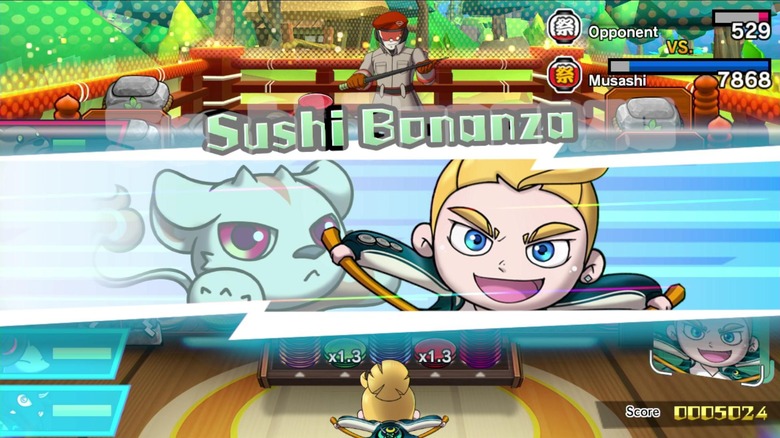
It doesn't stop there, either. As you play, you'll unlock new items that you can take into battle, awaken Sushi Sprites to make them stronger, and complete challenges that increase your Sushi Striker ranking and allow you to do more in battle. It quickly becomes clear that even though Sushi Striker seems simple on the surface, that's merely a facade that's actually hiding a much deeper game.
Adding new Sushi Sprites to your roster and coming up with the perfect "load out," for lack of a better term, definitely has a Pokemon feel to it, and that only adds more to Sushi Striker's fun factor as it allows to find the approach that works best for you. The same is true of completing those challenges to increase your Sushi Striker rank, because they add yet another layer of things you need to be conscious of as you play through your matches.
Nintendo being Nintendo, you might be tempted to think that Sushi Striker is a game that offers little challenge in the name of creating a title that everyone can play. In the time I've spent with the game so far, I've found that isn't true. Some of the matches seem to be a breeze, but there are certainly others that are challenging and require multiple attempts before you finally steal a win. Of course, that could all be down to the fact that I'm not particularly great at puzzle games, but regardless, I'm satisfied with the level of challenge I've found in Sushi Striker.
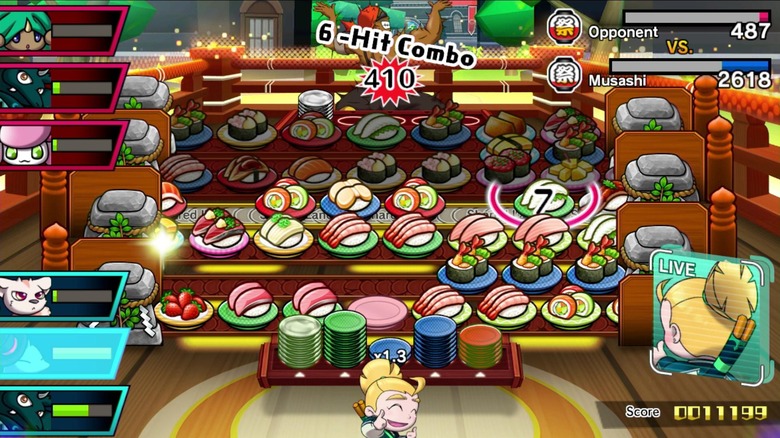
For all the praise, there are some things I don't like about the game. The Switch's control methods leave something to be desired, especially if you're playing in handheld mode. When you are, your best option is to use the Switch's touchscreen capabilities and match plates by sliding your finger across the screen. This isn't really ideal, as it means your hand and wrist obscure part of your lanes, but it isn't so bad once you become accustomed to it. It's clear this was a game made for the 3DS though, as I can certainly see how great using a stylus would be.
You'll also sometimes encounter enemy abilities that seem straight up unfair. It's a bit jarring to come across an enemy that completely changes the way a match would normally play, and more often than not, you end up with a frustrating string of losses while you try to figure out how to beat these new abilities in the midst of everything else that's going on. I've put down the game in frustration more than once after banging my head against enemies with seemingly overpowered abilities.
Despite that, I think the most important part is that I inevitably pick it back up again to continue playing, and there's a real feeling of accomplishment when I defeat an enemy that was giving me problems. Even though I think my current love affair with Sushi Striker might slow down a bit now that Mario Tennis Aces has arrived, I definitely won't be putting it down for good.
So, if you're a Switch owner and Sushi Striker got lost in the shuffle for you, then consider this your reminder to give it a try. It's one of the most surprising games of the year for me, and I'm happy that Nintendo is stepping away from its familiar franchises to do something new on the Switch. In my opinion, Sushi Striker is a great game that should be in your Switch library, even though it didn't get the time in spotlight that it probably deserves.
